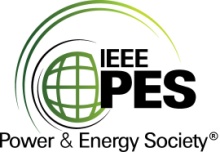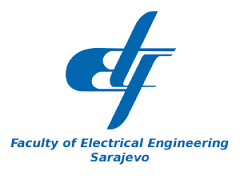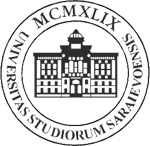Tutorial #1 – Blockchain for Smart Energy Systems
Lecturer:
Yan Zhang, University of Oslo, Norway
Abstract:
Smart power grid is a modernized grid that proactively uses state-of-the-art technologies in the areas of sensing, communications, control, and computing technology to dramatically improve efficiency, sustainability, stability, and security. With the development of the distributed microgrid architecture, renewable energy resources and widespread electric vehicles, smart grid is facing many unprecedented challenges for the smart energy management and operation. In this tutorial, we will mainly focus on Blockchain technology and application for smart and secure energy systems. We will first introduce the key concepts, challenges and visions in the future generation smart grid. We also present the scenarios on exploring Internet principles (e.g., Peer-to-Peer) in the energy domain for energy sharing and trading. Then, we will introduce Blockchain technology and its general applications, as well as new applications in the energy domain. Next, we will present Blockchain for smart energy management in decentralized Peer-to-Peer (P2P) energy sharing and Vehicle-to-Grid scenarios. Auction theory and game theory will be also explored for energy balance and protecting users’ private information. Finally, we will conclude and point out related open issues.
Biography:
Professor Yan Zhang is Full Professor in Department of Informatics at University of Oslo, Norway. He received a PhD degree from School of Electrical & Electronics Engineering, Nanyang Technological University, Singapore. He is an Associate Technical Editor of IEEE Communications Magazine, an Editor of IEEE Network Magazine, an Editor of IEEE Transactions on Green Communications and Networking, an Editor of IEEE Communications Surveys & Tutorials, an Editor of IEEE Internet of Things Journal, an Editor of IEEE Vehicular Technology Magazine, and an Associate Editor of IEEE Access. He served as 30+ guest editor in IEEE journals/magazines. He serves as chair positions in a number of conferences, including IEEE GLOBECOM 2017, IEEE VTC-Spring 2017, IEEE PIMRC 2016, IEEE CloudCom 2016, IEEE CCNC 2016, IEEE SmartGridComm 2015, and IEEE CloudCom 2015. He serves as TPC member for numerous international conference including IEEE INFOCOM, IEEE ICC, IEEE GLOBECOM, and IEEE WCNC. His current research interests include: Energy Internet, Big Data (energy, wireless) and next-generation communications networks. His works in these areas have received more than 9100 citations. He is IEEE VTS (Vehicular Technology Society) Distinguished Lecturer. He is also a senior member of IEEE, IEEE ComSoc, IEEE CS, IEEE PES, and IEEE VT society. He is a Fellow of IET. He is a regular speaker to give keynotes in conferences, short-term courses in summer schools and tutorials in conferences.
Tutorial #2 – Application of Synchrophasor Technology to Enhance Distribution System Monitoring, Automation and Operations
Lecturer:
Muhidin (Dino) Lelic, Quanta Technology, USA
Abstract:
Introducing Distributed Energy Resources (DER) in distribution systems and high interest in microgrid deployment are fundamentally changing the way that distribution systems are planned, operated, protected, and managed. Synchrophasor measurement technology, now widely adopted in transmission systems, can be applied to address challenges caused by changes in distribution system operations to provide high resolution field monitoring and fast response and timely controls and automation. This tutorial will explain and categorize technical requirements and issues that could leverage high rate real-time data measurements outside of substations. In discussing of use cases for operation of distribution systems, the tutorial will address opportunities for application of synchrophasor technology, with examples and case studies. The tutorial will cover introduction to synchrophasor measurement technology, relevant applications, and required infrastructure for the PMU technology implementation. Examples of PMU applications for implementing advanced distribution automation schemes will be discussed and lessons learned and best practice guidelines will be provided.
Biography:
Dr. Muhidin (Dino) Lelic, Director, Applied R&D and Executive Advisor at Quanta Technology in USA has over 36 years of academic and industrial experience. Dino has been providing subject matter and project/program management expertise to numerous utilities in US, Europe, Latin America, Middle East and Asia, in areas of synchrophasor technology, advanced distribution management systems, advanced distribution automation, renewables integration, and microgrids. He was a Program manager for US Department of Energy (DOE) sponsored Smart Grid Investment Grant project for New York Independent System Operator, a three year project to develop and implement Synchrophasor Wide Area Monitoring System. In addition, he led several DOE and utility supported projects in area of synchrophasor technology, including design of requirements, applications, development of roadmaps, and business case analyses for both transmission and distribution utilities worldwide. Dr. Lelic has held teaching and research positions at University if Tuzla, Manchester (UMIST) and Rutgers University. He holds 26 US patents and 8 European patents, has coauthored 4 books, and numerous papers, technical reports and book chapters. He is a Senior Member of IEEE and holds Dipl. Eng. and MS degrees in Electrical Engineering from University of Belgrade and Ph.D. degree from University of Sarajevo, as well as Executive M.S. degree in management from Rensselaer Polytechnic Institute.
Tutorial #3 – The Smart Transformer: Impact on the Electric Grid and Technology Challenges
Lecturers:
Costas Vournas, National Technical University of Athens, Greece
Giovanni De Carne, University of Kiel, Kiel, Germany.
Marco Liserre, University of Kiel, Kiel, Germany
Abstract:
The increasing connection of renewables and new loads is challenging the distribution grids. In the ERC Consolidator Grant “Highly Efficient And Reliable smart Transformer – HEART”, a new concept of transformer is proposed: the “Smart Transformer”. The Smart Transformer is a power electronics-based transformer, aims not only to adapt the voltage level from MV to LV grids but also to provide ancillary services to the grid. The Smart Transformer can control the reactive power in MV grid sustain the voltage profile, and it can interact with loads and generators in the LV grid by means of voltage and frequency control. Moreover, the Smart Transformer is a natural connection point for hybrid (AC and DC) grids both at MV and LV levels. This tutorial aims to introduce the Smart Transformer concept, topologies and basic controller at first, and to explore the advanced features that the Smart Transformer offers. The tutorial focuses on the ancillary services offered in LV and MV grids by the Smart Transformer, with particular focus on voltage and frequency control of LV grids, load sensitivity identification and load control, and reactive power support in MV grids.
Biography:
Costas Vournas (S’77–M’87 – SM’95–F’05) received the Diploma degree in electrical and mechanical engineering from the National Technical University of Athens (NTUA) in 1975, the M.Sc. degree in electrical engineering from the University of Saskatchewan, Saskatoon, Canada, in 1978, and the NTUA Doctor of Engineering degree in 1986. He is currently a Professor with the Electrical Energy Systems Laboratory, School of Electrical and Computer Engineering, NTUA. He has co-authored the book entitled Voltage Stability of Electric Power Systems. His research interests are in the area of power system dynamics, stability and control and include voltage stability and security analysis, wind generator integration in power systems, novel control applications in the distribution and transmission grid, as well as the effect of deregulation on power system operation and control.
Giovanni De Carne received the M.Sc. in Electrical Engineering from “Politecnico di Bari” (Italy) in 2013. In 2013, he carried on his Ph.D. studies at the Chair of Power Electronics at Christian-Albrechts Universität zu Kiel, Germany, on the PhD topic “Analysis of ST features for electric distribution grid” within the ERC Grant project “Highly Reliable And Efficient smart Transformer (HEART)”. In 2017 he joined the Kopernikus Project “ENSURE – New Energy grid SturcURes for the German Energiewende”, working on AC grid controllability increase by means of DC connection. He is member of PELS, IES and PES, and he an active author in the journal and conference of these societies.
Marco Liserre received the MSc and PhD degree in Electrical Engineering from the Bari Polytechnic, respectively in 1998 and 2002. He has been Associate Professor at Bari Polytechnic and Professor at Aalborg University (Denmark). He is currently Full Professor and he holds the Chair of Power Electronics at Christian-Albrechts-University of Kiel (Germany). He has published over 300 technical papers (more than 120 of them in international peer-reviewed journals) and a book. These works have received more than 24000 citations. Marco Liserre is listed in ISI Thomson report “The world’s most influential scientific minds”.
Tutorial #4 – IEEE 1547 Interconnection Standard
Lecturers:
Babak Enayati, National Grid, USA
Abstract:
Many countries have implemented renewables portfolio standards (RPSs) to accelerate the pace of deployment of renewables generation, which are distributed across the distribution power system. As the penetration of renewable power generation increases, electricity grids are beginning to experience challenges, which are often caused by intermittent nature of some common renewable generation types, sudden changes of the output power due to grid disturbances, low short circuit duty of the inverter based generators, and impact on the transmission and distribution system protection. Due to the increasing amount of Distributed Energy Resources (DERs) interconnections with the Electric Power System, the IEEE 1547 standard is going through a major revision to address some of the technical challenges associated with high penetration of DERs i.e. grid support functionalities, etc. The participants will learn about the benefits and challenges of the renewable energy resources interconnections as well as major changes to the IEEE 1547 i. e. voltage regulation, response to abnormal system conditions (including voltage and frequency ride through), power quality, islanding, interoperability, etc. The participants will also learn about the utility concerns/solutions to adopt the revised IEEE 1547 standard. National Grid’s experience with smart inverters i. e. how to set power factor and Volt/VAR based on the location of the solar facility will also be presented at this tutorial.
Biography:
Babak Enayati received his PhD in Electrical Engineering from Clarkson University, Potsdam, NY in 2009. He is currently a Lead Research Development and Demonstration Engineer at National Grid, Waltham, MA. He joined IEEE in 2006 and currently is Senior Member, IEEE and the IEEE PES Governing Board Member-At-Large. Babak is the Vice Chair of the IEEE Standards Coordinating Committee 21 (SCC21) and IEEE 1547, Standard for Interconnecting Distributed Resources with Electric Power Systems. Babak is also the Chair of IEEE PES Distributed Resources Integration working group. Babak is a registered Professional Engineer (PE) in the state of Massachusetts.










